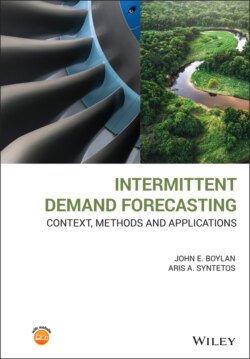Читать книгу Intermittent Demand Forecasting - John E. Boylan - Страница 31
1.5 Chapter Summary
ОглавлениеThe associated cost of inventories of purchased goods has been estimated to be between 25% and 35% of the value of those goods (e.g. Chase et al. 2006): a firm carrying $20 million in purchased goods inventory would, accordingly, incur additional costs of $5–7 million. These are costs that, once reduced, can significantly improve the firm's net profits (Wallin et al. 2006). The total cost of purchased goods inventory can be quite alarming, calling for innovative approaches to cut it down. Intelligent intermittent demand forecasting offers such opportunities.
In the defence environment, Henry L. Hinton Jr, Assistant Comptroller General, National Security and International Affairs Division, stated, ‘Our work continues to show weaknesses in DoD's inventory management practices that are detrimental to the economy’ (GAO 1999, p. 1). Sixteen years later, only minor improvements were reported (GAO 2015), and public announcements on the poor management of defence inventories and the resulting detrimental impacts on the economy constitute a recurring issue in the news. Similarly, the expansion of the after‐sales industry and the increasing importance of commercial service operations have not been adequately reflected in the development of ERP and supply chain software packages, the functionality of which has often been judged to be inadequate (Syntetos et al. 2009b). In addition to the after‐sales and MRO environment and the military sector, intermittent demand items dominate the inventories in a wide range of industries, calling for improved solutions for their cost‐effective management.
There have been rather minor improvements in practical applications in this area since around 2000, but there have been major improvements in empirically tested theory since that time. Many of these theoretical advancements have not yet been incorporated in commercial software, and hence, there are major opportunities for improving real‐world applications. We hope this book will help towards moving in that direction.
